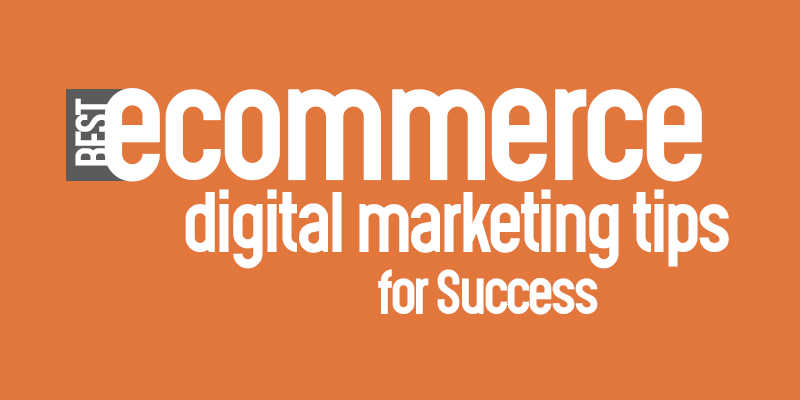By evaluating your present digital marketing strategy, you’ll realize the gaps that you need to focus on. But how to do this evaluation process effectively? Here’s a thorough guide that you can frequently refer for optimizing your digital marketing strategies:
1. Put your customer first. Whether you are a B2B or a B2C company, knowing your customers or their customers is a very important part of strategizing your digital marketing. Define your target audience by using the insights from your market research and choosing the best ideas from your competitors in order to develop the strategy. Learn how your customers buy your products or services and learn their purchase reasons such as their personas, social media presence, pain points and sentiments. Ensure every step in your digital marketing strategy takes your brand closer to exceed the customers’ expectations.
2. Provide real-time personalized experience. Consumers are concerned with their data but they do prefer trusted online retailers to provide customized shopping experience. The latest GDPR laws insist on providing customers the flexibility to control the use of their personal information by brand websites. You should have an opt-in and opt-out criteria while providing personalized offers for customers who ‘opt-in’. Showcase products that they prefer and those that are lying in their wishlist and encourage them to purchase. In any case, do not invade their privacy.
3. Create innovative email marketing campaigns. Influencing customers by sending periodic emails about your trending products or current offers can be effectively done using personalized emails. Have a strong email network and segment the customers so that you can give equal attention to different kinds of customers. Make sure to check subscriber activity, send monthly newsletters and gentle reminders about the items left in their cart.
Upsell products that your customers may show potential interest without hitting their inboxes too frequently. Implement A/B testing in the checkout process to know why customers leave the store without purchasing. You can also automate these processes with eCommerce revenue generation tools like TargetBay.
4. Write user-centric and original content. Content communicates your brand story with your target audience. It should create the right waves in the minds of people by identifying the important factors that influence their actions. Basically, it is the art of conversion by attracting the right people to see the right information at the right time in your site. Your content strategy should involve in-depth topic research for the top keywords and provide useful information to engage the target customers.
5. Collect customer reviews and feedback. People rely on customer feedback more than brand and other sources. According to Invesp, online reviews have as much as 90% preference and 88% trust online reviews that includes a personal recommendation as well. Positive reviews help build trust while negative reviews give an opportunity to improvise on the weak points. Make sure to have a prominent section in every product page that lists customer reviews and ratings.
6. Use social media effectively with Social Media Optimization (SMO) techniques. You should create more traffic by reaching a wider audience base on social media sites. Facebook, Instagram and Pinterest can be used for showcasing your content banners while twitter can be used to send frequent updates and running contests to engage the audience. Overall, your social media presence can bring some of the best customers and provide an opportunity for them to directly interact with your brand.
7. Optimize SEO with proven techniques. Analyze the website architecture to ensure every site page is visible to the public and it can be found by search engines without any blocks. Find out the best performing keywords that drive sales and allocate them to the specific web pages so as to improve their ranking. Optimize the content strategy to engage audience which will drive more traffic and increase conversions. Use research tools to link your content pages with authoritative websites. Review the SEO process frequently and make positive improvements.
8. Experiment with slight variations in Ad spending. It can be made more profitable by playing around a few keywords as an experiment. Start with Google AdWords which helps list your site in Google search results. Choose the right attributes users will search for and use feed automation software to update your inventory feeds in Google merchant center. You can also try advertising on Facebook with a small budget initially. Later, if things go well, you can increase the budget to reach out to more customers.
Bonus Tips:
- Give equal importance to your mobile app as to your desktop site. Ensure responsive interface no matter from which device customer logs into your store.
- Launch a Facebook store to sell your products on the biggest social media platform, directly.
- Include videos, audios and eBooks in your content strategies for building a knowledge base.
- Appreciate by rewarding your most loyal customers with discounts and loyalty programs.
- Develop user interfaces for wearables to connect with tech-savvy customers and early adopters.
- Have forums, message boards and chat rooms to communicate with your customers freely. This is an excellent opportunity to build a database of user-generated content.
- In eCommerce, delay in delivery disappoints your customers pretty badly. Make sure you have a proper delivery management system that stands out from the competition.
- Automate email campaign by fetching data such as birthday and anniversaries and send personalized emails to pursue them to visit your store for latest offers.
- Revise your marketing strategy by learning from the insights of periodic reports on poorly performing aspects.
- Publish industry news periodically. Break down the news for customers to easily understand. This will engage, enrich their knowledge and bring them back to your site.
Conclusion
Digital marketing is an evolving process and it takes time and experience to figure out the most optimized strategy. While we have addressed the most fundamental parameters here, you can go out and experiment with new strategies that best suits your brand.

